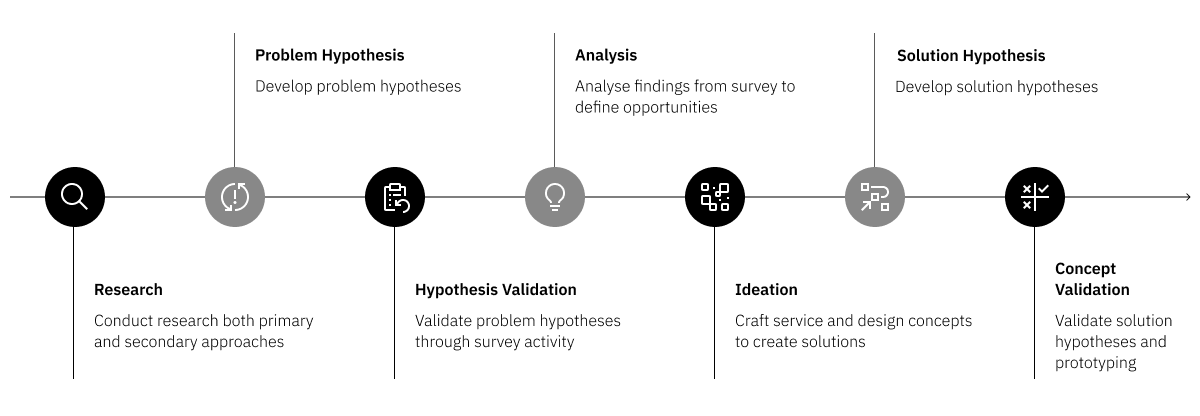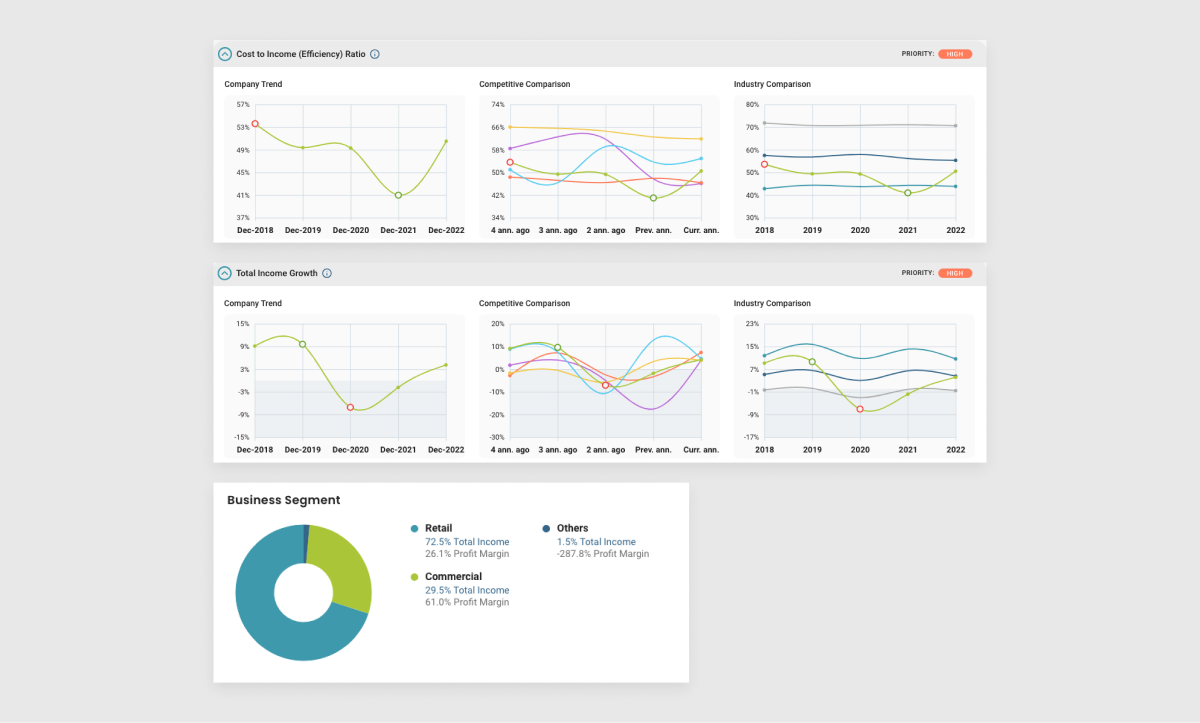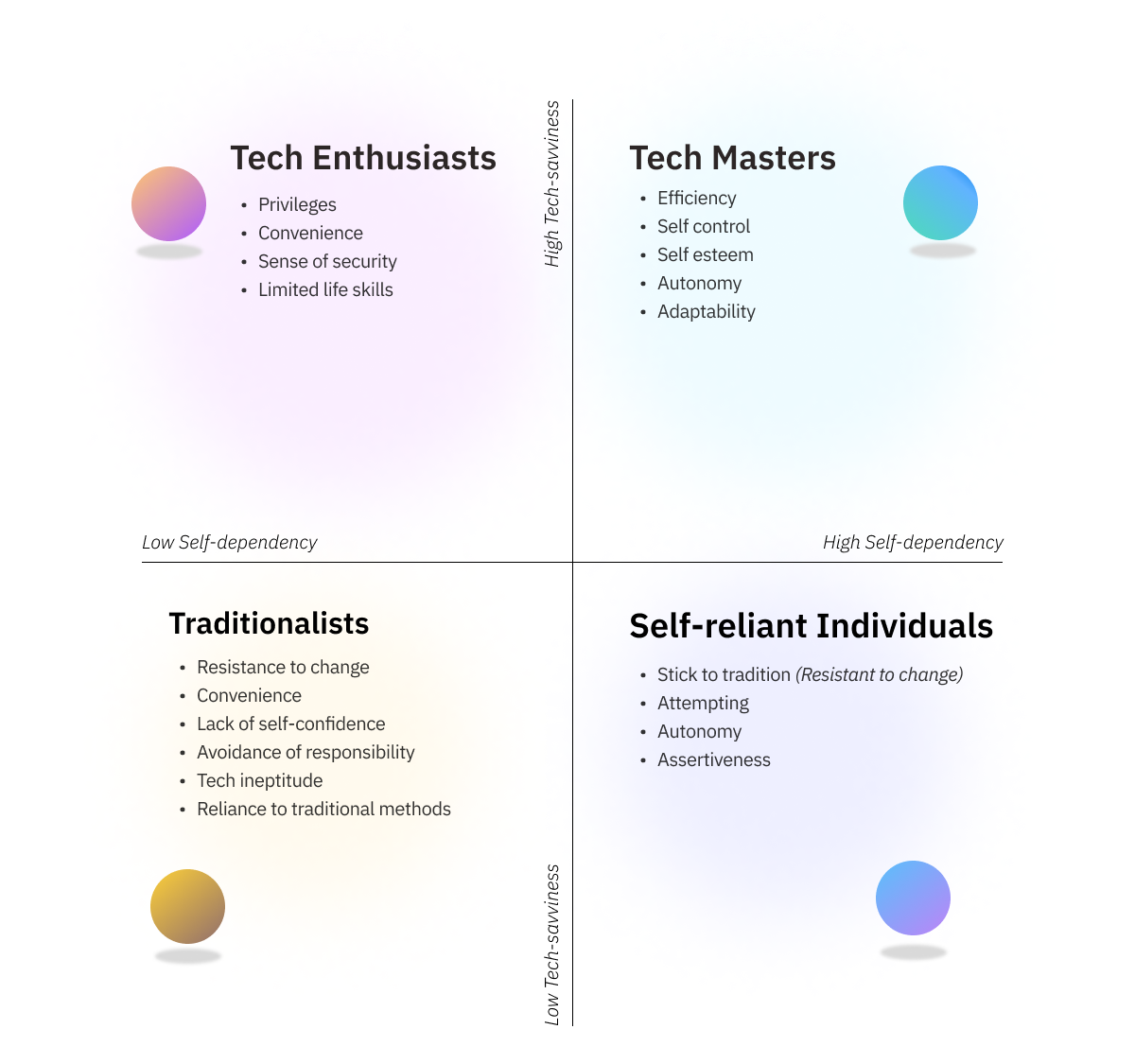The principal aim of the preliminary design concept for the forthcoming onboarding journey within the online banking application is to provide customers with a smooth onboarding experience free from disruptions, all the while guaranteeing adaptability and simplicity, alongside implementing standard security protocols.
Considering the iterative character of this process, our suggested three-week endeavor stands as the inaugural development phase, demonstrating our methodology in experience design within product development. Subsequent iterations will be undertaken to experiment with and enhance solutions prior to the official product launch.
Approach
We have employed the IBM Garage framework to implement this proposal. This framework prioritizes customer-centered design, underscoring the importance of attentive listening to customers' requirements and comprehending their journey from their viewpoints.

Strategic Initiatives
We initiated preliminary research to grasp the business index and the various segments within which the company functions. This initial phase enabled us to enhance our comprehension of the context and commence the development of strategic initiatives aimed at tackling forthcoming challenges.
Based on the data presented, the business exhibits a slightly lower income ratio and total growth compared to the median rates observed among competitors. Furthermore, the business segment predominantly pertains to retail services, which primarily engage with individual customers.

The strategic initiatives set the project's direction and goals, including enhancing the onboarding journey and strategic product development to boost revenue. Prioritizing the onboarding initiative is key, as it captures customer experience and encourages ongoing interaction.
How might we enhance the app onboarding flow for the new app users? So that users can receive a positive onboarding experience. We will be successful when the number of new onboarding users increases by 10% within the next quarter
Primary Research
This field research aims to understand the customer experience when opening bank accounts at physical branches. Divided into two groups, our team immerses itself in the process to gather insights into interactions, documentation, waiting times, and overall experience.

Secondary Research
This phase entails analyzing online banking services offered by top competitors. The goal is to uncover market gaps and insights into features, user experiences, and trends that can enhance the bank’s online platform.
Using Nielsen Group's heuristic evaluation methodology, this research aims to assess the user experience and usability of the bank’s online platform. Focusing on established usability principles, it identifies strengths and weaknesses, offering a structured framework for optimizing the user interface.
This research visually analyzes the application's user interfaces (UIs) to pinpoint design gaps in alignment with the business's branding. By evaluating visual elements and aesthetics, it aims to ensure the UI meets usability standards while seamlessly aligning with the brand identity.
Problem Hypotheses
Following the research conducted, the team has formulated pivotal problem hypotheses to validate in forthcoming activities. Crafting these hypotheses has furnished the team with a clear direction for future endeavors.
- Customers often feel uncomfortable and insecure when they have to drop off in the middle of the process to complete NDID (National Digital ID) when switching to another banking application.
- Customers with multiple savings accounts may feel indifferent or undervalued when considering the benefits of a high-interest rate, especially when exploring the process of applying for an additional current account.
- Customers commonly feel uncomfortable when engaging in the process of filling out a bank account opening application form, and often feel unaware of the option to open an account online through the app when attempting to apply for a bank account.
- Customers aiming to expedite and efficiently complete tasks often feel a heightened sense of consideration or pressure in crowded environments, especially when engaging in activities such as applying for a new bank account or performing financial transactions at a bank branch.
- Customers commonly feel frustrated when encountering a failure in facial verification (eKYC) during the account opening process.
- Customers who typically do not carry a National ID and physical cash may lack motivation and fail to recognise the necessity of having these items when utilising financial services.
Findings & Insights
The primary objective of this survey is to validate the problem hypotheses associated with the process of opening online bank accounts through both physical and digital experiences. This research aims to gather real-world insights and feedback from users to enhance the overall user experience and address any potential issues identified in the hypotheses.
The study will concentrate on office employees situated in Bangkok (BKK), aged 20 to 59, who are adept at using smartphones. This demographic selection aims to secure a representative sample of users who are potential prospects, contributing to the enhancement of the bank’s revenues.

By grouping the findings and analysing themes of information by using the PCA method can reveal valuable insights. This approach allows us to map potential data, define user types, and articulate problem statements with clarity.
- Most of customers who aged 20-39 years are expected for several services without going to the branches.
- Most of customers expected for fasten services and not too complicated but they’re also wanted to know information of the product clearly.
- Customer wanted to pause their action to do others activity while they’re open bank account in application.
- Most of customers require assistance when encountering eKYC issues.
- Most of customers frequently forget their important documents when opening a bank account.
- Most of customers are not very comfortable with the account opening process at the bank or when using bank services.
Archetype Analysis: Tech Master
Our target demographic consists of tech-savvy individuals who exhibit advanced proficiency and excitement in embracing technology. They also prioritize autonomy and have a strong sense of self-esteem in their endeavors. According to research, which includes consumer trends, this customer segment appears to be closely aligned with the bank's vision of interaction through its application.

To engage and retain this customer segment, here are some key opportunities worth considering.
- Efficiency should be a primary consideration when designing the journey for this customer segment, as they are fully equipped with technological advancements. Therefore, the more efficiently they can achieve their goals, the higher value they perceive.
- Flexibility is another crucial aspect to consider, allowing customers to choose the path they prefer, as they highly value autonomy in their actions. Providing options when necessary could greatly enhance customer satisfaction.
- Speed is also an essential consideration when developing a digital experience for this customer segment, as they are inclined to lose interest quickly and have less patience when navigating through a journey. Incorporating concise elements into the flow can help maintain their engagement.
- Interactive touchpoints can serve as a strategic advantage for impressing this customer segment with the product, as they likely have fluid expectations shaped by their experiences with other leading apps. By innovatively interacting with customers, the bank can enhance their enjoyment, distinguishing itself through innovative interactions.
Ideation
Our team initiated creative thinking by generating blue-sky ideas for enhancing the business’ platform. We then clustered these ideas into groups to identify key themes. Following this, we prioritised and selected the most valuable and feasible concepts. These chosen ideas are further developed into practical features for the new enhanced version of the application, ensuring a balance between innovation and feasibility in the enhancement process.

Solution Hypotheses
From our ideation, we've distilled six solution hypotheses to create a prototype that reflect our vision.
- Product showcasing at the outset of onboarding, offering customers the flexibility to select multiple products and apply for them simultaneously.
- The assistance opt-in selection for any steps where customers may require assistance, such as filling out application forms or completing eKYC steps. Customers are able to schedule a call with an assistant at their preferred date and time.
- Save draft functionality with interactive reminders to notify users when they leave the app, ensuring they can seamlessly resume their application upon returning.
- eKYC can be skipped if failed, with the option to re-verify later steps or with assistance from the application.
- Allowing offline documentation for certain product applications to prevent inconvenient submission issues.
- Enhancing the overall look and feel to be more modern and approachable, creating a comforting atmosphere for customers and fostering a friendlier experience within the app.
Features Summary

- Bundle-able Onboarding : Customers can select multiple products or services in a single streamlined process. They can save time and effort, enjoying a more efficient onboarding experience.
- Virtual Assistance : The Assistance offers personalised support, whether users require guidance, clarification, or assistance with specific tasks.
- Auto-Save Information : Customers can have confidence that their data will always be securely preserved by the system, ensuring convenience and peace of mind.
- Interactive Reminder : Offers live activity updates and notifications, gently reminding users to complete their process. Through timely prompts and informative alerts, users stay on track with their tasks.
- Skippable step : Choose to bypass the step if you're not ready or uncomfortable with the process, offering flexibility and convenience in your registration experience.
- Pick-up Service : Opt for the pick-up service if uploading documents is inconvenient. The messenger will collect paper documents from the user's location, ensuring a seamless process.